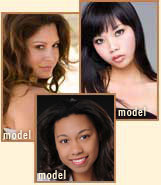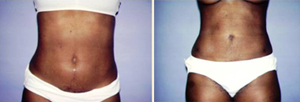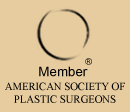Cosmetic Surgery for Patients of Color in Seattle
Also serving Bellevue, Kirkland, & Everett

Hispanics, African-Americans, and Asian-Americans make up the great majority of those patients of color undergoing cosmetic surgery procedures. Nose reshaping (rhinoplasty) was the most common procedure performed, followed by liposuction, breast augmentation, Botox, and injectable fillers. Also popular in the Asian-Americans population is Asian blepharoplasty.
Why is Dr. David F. Pratt particularly skilled in performing plastic surgery in patient of color?
Dr. David F. Pratt is a highly skilled cosmetic surgeon Seattle, Bellevue, Tacoma and Everett patients of color see due to his extensive experience in performing ethnic plastic surgery, having performed hundreds of procedures in African-American, Asian, and Hispanic patients throughout his years of private practice.
He understands the differences in cultures, the effects of ethnicity on the quality of scarring, as well as what measures need to be taken to minimize scarring in ethnic patients. This knowledge has led to the utilization or the Pratt Plastic Surgery Scar Reduction Protocol.
| Liposuction |
 |
| BeforeAfter |
| View more patient images |
Is it true that patients of color have plastic surgery in order to change their ethnic identity?
No, nearly all of the patients of color that we see at Pratt Plastic Surgery feel that it is very important to maintain their ethnic identity. Patients of color undergoing facial procedure wish to have a natural look, with harmonious refinement of their features without changing their inherent racial features. View before and after photographs of cosmetic procedures performed on patients of color.
What are some of the differences that a surgeon must consider when performing facial plastic surgery in the Asian patient?
Like Asian blepharoplasty, the Asian rhinoplasty surgery in the patient is inherently quite different from rhinoplasty in the Caucasian. The “standard Rhinoplasty” in the Caucasian patient usually consists of removing bone and trimming the nasal cartilages.
In the Asian patient, the bridge of the nose usually needs to be built up or “augmented”, and often the base of the Asian nose and nostrils require narrowing. This fact is important for your surgeon to understand in order for you to achieve the natural appearing results that you have always dreamed of.
How is the Asian Blepharoplasty different from Blepharoplasty in the Caucasian patient?
Approximately fifty percent of Asians have a “single eyelid” resulting in a relatively narrow eye aperture. The Asian blepharoplasty creates a “double upper eyelid” with a well defined crease, and opens up the aperture of the eye, creating a look of alertness and beauty.
Dr. Pratt understands the particular wants and special needs of his Asian patients, such as the importance of creating a natural appearing eyelid which is just the right size, not too wide and not too narrow.
How is the skin of patients of color different from their Caucasian counterparts?
The skin of darker skin patients, whether it is those of African, Asian, Middle Eastern, or Hispanic descent, is usually much thicker and more elastic. These qualities are desirable in that thick skin tends not to wrinkle as much as the thinner white skin.
How is scarring different in patients of color versus Caucasian patients?
Dr. Pratt’s experience with scarring in patients of color has been quite favorable, despite many reports that show a greater tendency for either keloid or hypertrophic scars to occur in these patients.
Dr. Pratt is well aware of this overall tendency for poor scarring, and has thus instituted an aggressive policy regarding the prevention and early treatment of these types of scars. At Pratt Plastic Surgery, we feel that it is important to perform a careful inquiry regarding previous scarring in the patient and family members prior to performing cosmetic surgery in patients of color.
Fortunately, we have instituted the Pratt Plastic Surgery Scar Reduction Protocol in order to minimize the chance of unsightly scarring.
What is a Keloid scar, and how is it different from a Hypertrophic scar?
Keloids are abnormal scars that continue to produce more and more scar tissue as time goes by. They tend to spread from the original area of incision and can become quite large and bulky. A hypertrophic scar is similar to a keloid scar in that it continues to produce excess scar tissue; however this is limited to the area of the original scar.
What precautions need to be taken in the patient of color undergoing Tummy Tuck, Lower Body Lift, or Breast Lift/Reduction surgery?
These procedures necessitate longer incisions and resultant scars. Additionally, there tends to be high tension on the suture line in these procedures, increasing the tendency for the patient to create heavier scar tissue during healing formation.
For this reason, we use the Pratt Plastic Surgery Scar Reduction Protocol in all of our Seattle, Bellevue and Everett tummy tuck, mommy makeover and breast lift patients of color in order to minimize the chance of unsightly scarring.
How is nasal reshaping (Rhinoplasty) surgery different in African-American patients in comparison to that in Caucasians?
Beautification of the typical nose seen in Black patients usually requires thinning of the tip tissues of the nose, narrowing of the base of the nose and nostrils, as well as building up of the bridge or “dorsum” of the nose.
Also, thicker skin in the Black patient is to be expected, which often necessitates using cartilage grafts to help define a more delicate nasal tip. Dr. Pratt places all of his rhinoplasty incisions inside of the nose in order to avoid external nasal scars.
Is it true that JUVÉDERM™ is the first hyaluronic acid dermal filler that has demonstrated its safety and effectiveness in persons of color?
Yes indeed, this is exciting news for both doctors and patients of color. Also, studies showed no increased risk of hyperpigmentation or hypertrophic scarring in persons of color with the use of JUVÉDERM™.







